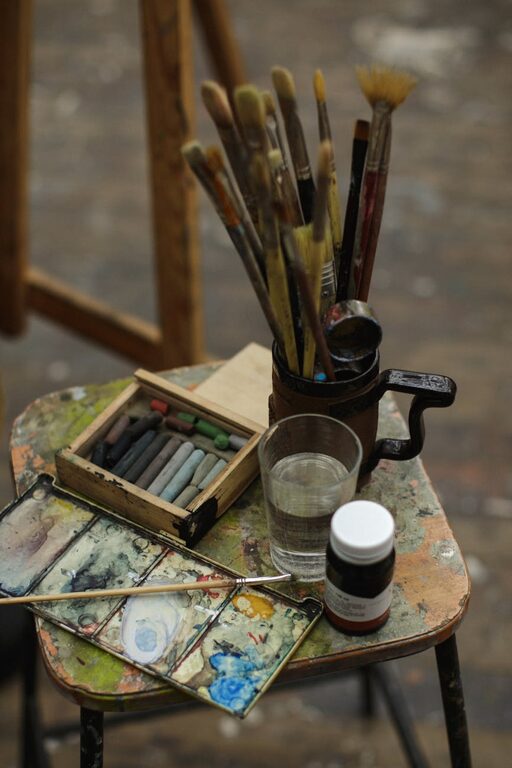Creativity isn’t just for artists and writers—it’s a valuable skill that anyone can develop and nurture. Incorporating simple creative practices into your daily routine can enhance problem-solving, boost your mood, and add excitement to everyday life. The great news is that you don’t need special tools or hours of free time to get started. Here are some easy ways to practice creativity every day.
Why Practice Creativity Daily?
Creativity is like a muscle—the more you use it, the stronger it gets. Regularly engaging in creative activities helps to:
– Improve mental flexibility
– Generate unique ideas
– Reduce stress by allowing self-expression
– Enhance your ability to see possibilities in challenges
By building habits that encourage creative thinking, you open yourself up to more innovation and fun in both work and personal life.
1. Start a Daily Journaling Practice
Writing down your thoughts daily is a powerful way to spark creativity. It doesn’t matter if you jot down your experiences, poem fragments, doodles, or brainstorm ideas—what counts is making a space for your mind to roam free.
Tips for journaling creatively:
– Set a timer for 5-10 minutes to write nonstop
– Use prompts like “What excited me today?” or “What if…”
– Combine writing with simple sketches or mind maps
Even a few minutes can clear mental clutter and inspire new perspectives.
2. Carry a Notebook or Use a Notes App
Great ideas often appear when you least expect them—in line at the grocery store, during a walk, or when chatting with friends. Having a notebook or a notes app handy makes it easy to capture these sparks right away.
Benefits:
– Prevents forgetting ideas
– Encourages you to review and develop thoughts later
– Makes creativity a natural part of your routine
Try reviewing your collected ideas weekly to spot patterns or find inspiration for projects.
3. Explore a Creative Hobby Regularly
Dedicating even a small amount of time to a creative hobby can refresh your thinking and boost your confidence. Whether it’s painting, playing a musical instrument, cooking, gardening, or crafting, doing something hands-on engages different parts of the brain.
How to stay consistent:
– Choose hobbies that excite you rather than those you feel “should” do
– Schedule hobby time like any appointment—15 or 30 minutes is enough
– Join groups or online communities for motivation and inspiration
The goal is enjoyment and exploration, not perfection.
4. Change Your Routine and Environment
Our brains often get stuck in habitual thinking patterns. Changing your surroundings or breaking routines can jolt creativity and lead to fresh ideas.
Simple changes to try:
– Take a different route to work or home
– Work from a new location—like a café or park bench
– Rearrange your workspace or add new décor
– Experiment with a new recipe or style of music
Novelty stimulates your senses and invites your brain to form new connections.
5. Practice Mindfulness and Observation
Being present and fully engaged with your environment helps you notice details others might miss. Paying attention to colors, sounds, textures, and interactions cultivates creative awareness.
Ways to practice observation:
– Take quiet walks focusing on sights and sounds around you
– Spend a few minutes daily noticing objects or patterns near you
– Reflect on moments of gratitude or beauty observed
Mindfulness encourages creative thinking by encouraging you to slow down and gather inspiration from everyday life.
6. Set Small Creative Challenges
Give yourself simple, fun challenges to stimulate your imagination. The constraints help your brain think differently and make creativity playful.
Challenge ideas:
– Write a six-word story about your day
– Create a quick sketch inspired by a random object
– Think of 10 alternative uses for a common item
– Take a photo capturing a theme like “joy” or “movement”
Regular challenges keep your creative muscles active and make the practice enjoyable.
7. Collaborate and Share Ideas
Creativity thrives in connection with others. Sharing your work, discussing ideas, and collaborating can spark new directions and deepen your understanding.
Ways to connect creatively:
– Join local clubs or online forums related to your interests
– Participate in brainstorming sessions or workshops
– Share your creative projects on social media or blogs
– Seek feedback and invite new perspectives
Engagement with others provides motivation and broadens the creative pool.
8. Allow for Mistakes and Playfulness
Creativity can be intimidating if you expect every idea to be brilliant. Embracing mistakes as part of the learning process helps you stay open and curious.
Cultivating a playful mindset:
– View failures as experiments, not setbacks
– Try freewriting or free drawing without judgment
– Take breaks and come back to projects with fresh eyes
– Celebrate small creative wins
Playfulness invites exploration and joy, key ingredients for creative growth.
—
Final Thoughts
Making creativity a daily habit doesn’t require major lifestyle changes—just a willingness to explore, observe, and play. By incorporating these simple practices, you’ll find your creative confidence grows and your days become more inspired.
Remember: creativity is for everyone, and your unique ideas matter. Start small, be consistent, and watch your creative spark light up!

